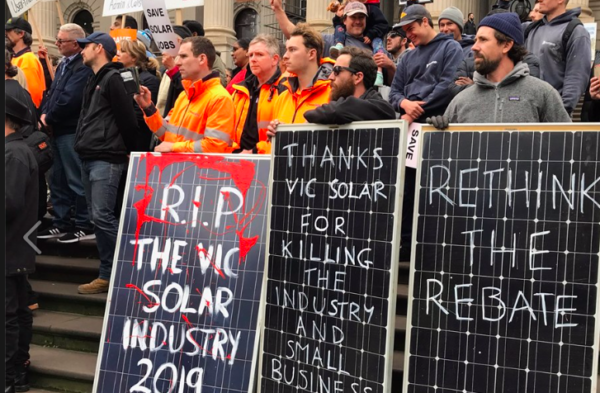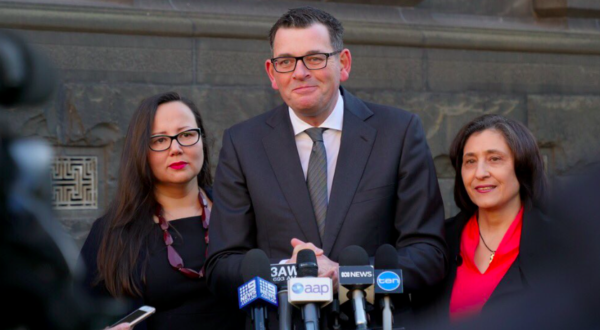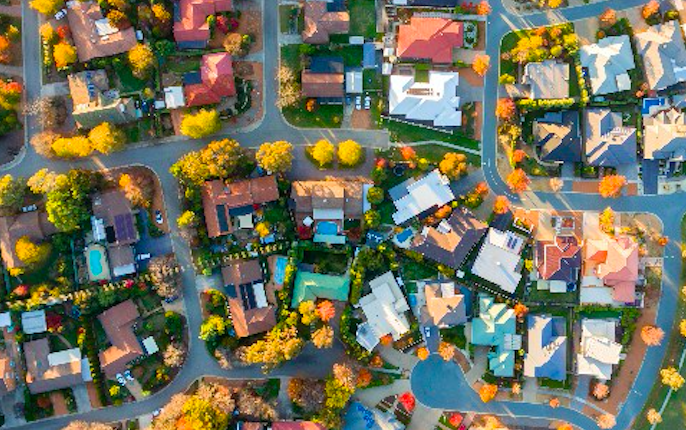The Victorian Government’s sometimes controversial Solar Homes program has helped push the tally for household solar installations in the state to 510,000, the Minister for Energy, the Environment and Climate Change (and Solar Homes), Lily D’Ambrosio announced yesterday.
By November 2020 more than 100,000 residential solar installations were attributable to rebates offered by the program.
As it crossed the half-a-million-rooftops rubicon, Victoria also chalked up 15,000 battery installations, with the government calculating that solar on top can save households up to $890 a year on electricity; and they can claw back an additional $640 per annum if a battery is integrated into the system to shift unused daytime generation to night-time supply.
“Victoria has embraced renewable energy — and we want to see these impressive figures rise even higher,” said D’Ambrosio in a statement.
Did you know there are now more than 510,000 small-scale PV systems in Victoria? That's 1 in every 5 homes, including Osman's! Rebates of up to $4,174 are available if you want to be part of the solar revolution #springst https://t.co/6kgMif4l2G pic.twitter.com/GbZfrxGI2r
— Lily D'Ambrosio MP (@LilyDAmbrosioMP) January 17, 2021
The $1.3 billion Solar Homes program — which over a period of 10 years is aiming to enable solar on 770,000 homes, boost solar hot water-system installation by 60,000 and support the addition of batteries to 10,000 homes — had a rough start.
Great intentions were at first poorly executed
After its launch in August 2018, the program’s staged release of rebate opportunities derailed the efficient rollout of Victorian solar installations which to that point had been running at around 3,500 a month.
As people who would normally have invested in solar waited to score a rebated package in monthly releases that were capped at 3,333, the installation rhythm became a rollercoaster of peaks and post-release troughs, which caused some solar businesses to close and others to lay off workers. The application process for the rebate was also found to be unnecessarily complicated.

Image: Facebook/Smart Energy Council
In addition, the program was plagued in its early months by claims that the system was being ‘gamed’ by unscrupulous industry players who had devised ways to ‘harvest’ as many as 50 rebates a minute, leaving slim pickings for the vast majority of installers — a government investigation found no basis to this claim.
Reboot and constant improvement
Since briefly suspending the program and restarting with revised systems on July 1 2019, the Victorian Government has consistently strengthened the program offering: when applications for rebates on batteries weren’t meeting the number of subsidies on offer, for example, the Government increased the number of postcodes eligible for the rebate.
“Almost 1,900 Victorian households have now applied for a Solar Homes household battery,” since batteries were incorporated in the program in July 2019, says the Minister’s statement. It adds, “fortnightly allocations are being snapped up almost as soon as they go online”.
In its 2019/20 budget the Government added 1000 four-year interest-free loans of $2,225 for eligible applicants to the solar subsidy, such that consumers could install a 4 kW system, worth around $4,450, without having to make any upfront investment.
The current offering stands at $1,850 rebate, and $1,850 interest-free loan for solar panel installations, or up to $4,174 rebate on a household battery system.
Most recently, the Victorian Budget 2020/21 provided $191 million to expand the number of solar rebates available to householders over the coming two years by 42,000; to offer 15,000 solar rebates to businesses; and to provide 17,500 solar batteries over three years throughout Victoria — no postcodes barred.

Image: Twitter/Victoria Premier's Office
Unlocking the postcodes
The revised battery bonanza was perhaps added in response to Peter Walsh, leader of the National Party in Victoria, and MP for Murray Plains, berating the Andrews Labor Government in Parliament last year in June for what he observed as the program’s bias towards Melbourne postcodes. Walsh said none of the 28 postcodes in his regional electorate where solar systems are widely embraced were included in the list of areas “eligible” for the battery rebate, despite the fact that:
“The Andrews Labor Government said the battery program targeted designated postcodes with high photovoltaic penetration and population growth. What they meant to say was the battery program targeted designated postcodes with high photovoltaic penetration and population growth – except for regional Victorians.”
In all, the Victorian Government will make 17,500 battery rebates available over the coming three years to keep up with demand, and D’Ambrosio said yesterday that the recent expansion of the battery program, “will help Victorians store their affordable rooftop energy and boost local solar businesses”.
Once again the Government feels it can confidently predict that the Solar Homes program will create “at least 5,500 jobs” over its 10-year lifetime. Said D’Ambrosio, “Solar is good for jobs, it’s good for the environment and it’s good for bringing down power bills.”
This content is protected by copyright and may not be reused. If you want to cooperate with us and would like to reuse some of our content, please contact: editors@pv-magazine.com.









1 comment
By submitting this form you agree to pv magazine using your data for the purposes of publishing your comment.
Your personal data will only be disclosed or otherwise transmitted to third parties for the purposes of spam filtering or if this is necessary for technical maintenance of the website. Any other transfer to third parties will not take place unless this is justified on the basis of applicable data protection regulations or if pv magazine is legally obliged to do so.
You may revoke this consent at any time with effect for the future, in which case your personal data will be deleted immediately. Otherwise, your data will be deleted if pv magazine has processed your request or the purpose of data storage is fulfilled.
Further information on data privacy can be found in our Data Protection Policy.